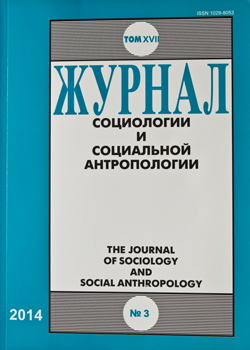Gender Differences and Determinants of the Acculturation Strategies among Russian-Speaking Immigrants in Germany
Keywords:
migration, gender perspective, adaptation of migrants, adaptation strategies, Russian-speaking immigrants, ethnic German immigrants, Jewish contingency refugees
Abstract
This article explores the problem of adaptation of Russian-speaking immigrants in Germany from a gender perspective. The modern world has entered the era of globalization and isolated societies deprived of the influence of other nations and cultures have already gone. Recently migration flows in Europe in the context of EU enlargement towards East have increased significantly. Migrants from the former Soviet Union play a significant role in this process. Gender of migrants affects the way they adapt to the new country. The methodology of this study relies upon John W. Berry’s model of acculturation and feminist theory in its liberal interpretation. The acculturation strategies and determinants of migration behavior were analyzed using migration statistics, in-depth interviews and the results of the Internet survey (N=100). The author pays particular attention to gender differences in adaptation practices. She verifies a working hypothesis, according to which female immigrants are facing serious problems due to loss of status and career positions. It is shown how well men and women, citizens of the former Soviet Union, manage to adapt to new conditions and whether gender impacts on the efficiency of adaptation. In conclusion, the author emphasizes better adaptability of women and the successful strategies they use. The study shows that the existing system of adaptation of immigrants is in the state of gender imbalance and requires expansion of gender-sensitive policies for immigrants.
Published
2014-02-20
How to Cite
Krasilnikova, O. (2014). Gender Differences and Determinants of the Acculturation Strategies among Russian-Speaking Immigrants in Germany . ZHURNAL SOTSIOLOGII I SOTSIALNOY ANTROPOLOGII (The Journal of Sociology and Social Anthropology), 17(3), 77–93. Retrieved from http://jourssa.ru/jourssa/article/view/659
Section
Sociology of Migration

